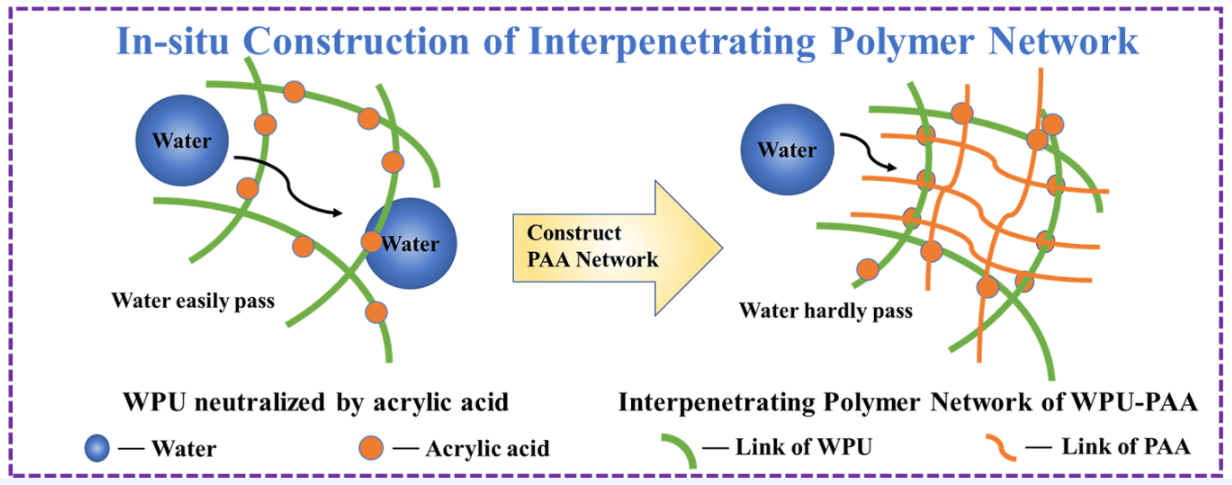 Open Access
Open Access
ARTICLE
High Water Resistance and Enhanced Mechanical Properties of Bio-Based Waterborne Polyurethane Enabled by in-situ Construction of Interpenetrating Polymer Network
1 Key Laboratory for Biobased Materials and Energy of Ministry of Education, College of Materials and Energy, South China Agricultural University, Guangzhou, 510642, China
2 Guangdong Laboratory for Lingnan Modern Agriculture, Guangzhou, 510642, China
3 Guangdong Provincial Key Laboratory of Silviculture, Protection and Utilization, Guangdong Academy of Forestry, Guangzhou, 510520, China
* Corresponding Authors: Jing Wang. Email: ; Chaoqun Zhang. Email:
Journal of Renewable Materials 2023, 11(3), 1209-1222. https://doi.org/10.32604/jrm.2022.023371
Received 22 April 2022; Accepted 06 May 2022; Issue published 31 October 2022
Abstract
In this study, acrylic acid was used as a neutralizer to prepare bio-based WPU with an interpenetrating polymer network structure by thermally induced free radical emulsion polymerization. The effects of the content of acrylic acid on the properties of the resulting waterborne polyurethane-poly (acrylic acid) (WPU-PAA) dispersion and the films were systematically investigated. The results showed that the cross-linking density of the interpenetrating network polymers was increased and the interlocking structure of the soft and hard phase dislocations in the molecular segments of the double networks was tailored with increasing the content of acrylic acid, leading to enhancement of the mechanical properties and water resistance of WPU-PAA films. Notably, with the increase in content of acrylic acid, the tensile strength, Young’s modulus, and toughness of the WPU-PAA-110 film increased by 3 times, and 8 times, and 2.4 times compared with WPU-PAA-80, respectively. The WPU-PAA-100 film showed the best water resistance, and the water absorption rate at 96 h was only 3.27%. This work provided a new design scheme for constructing bio-based WPU materials with excellent properties.Graphic Abstract

Keywords
Cite This Article
 Copyright © 2023 The Author(s). Published by Tech Science Press.
Copyright © 2023 The Author(s). Published by Tech Science Press.This work is licensed under a Creative Commons Attribution 4.0 International License , which permits unrestricted use, distribution, and reproduction in any medium, provided the original work is properly cited.


 Submit a Paper
Submit a Paper Propose a Special lssue
Propose a Special lssue View Full Text
View Full Text Download PDF
Download PDF Downloads
Downloads
 Citation Tools
Citation Tools
